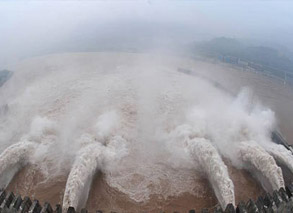Rising sea levels threaten Indian islands
2009-12-03 19:07 BJTSpecial Report: UN climate change conference in Copenhagen |
The effects of climate change and rising sea levels are threatening many low-lying areas of the world. One hard hit region has been the east Indian archipelago, where residents have been forced to leave their homes.
On the East Indian Archipelago bordering Bangladesh, Sagar island is part of the Sunderbans national park and the world's largest mangrove forest.
Rising sea levels have forced thousands of families to leave their ancestral homes and land.
And many more are living in the constant fear of losing theirs.
Shekhk Aftauddin, Environmental Migrant, said, "Everything got submerged in water, we lost our house, we lost our land, I lost my livelihood. It was very painful to leave everything and come here - but we had no choice."
Aruna Patro, Inhabitant of Nearby Island, said, "We live in constant fear - what will happen if water levels rise and submerge everything - where will we go? What will we do? What will happen to us?"
After a 10-year study in and around the Bay of Bengal, oceanographers say the sea is rising 3.14 millimeters a year in the Sunderbans, compared to a global average of 2 mm.
Sugata Hazra, Oceanographic Director of Jadhavpur University, said, GATA HAZRA, "In the Sunderbans, the impact of global warming is very high because not only is the coastline retreating, we are losing islands and losing land. We are losing them at a fast rate, where maybe in 30 years we will have lost 90 square kilometers, including two islands."
Environmental experts say rising sea levels have turned at least 10,000 inhabitants of Sunderbans into environmental refugees, and another 70,000 are in danger of meeting the same fate over the next thirty years.
Many of the inhabitants may have not even heard of the term "global warming" or climate change, but are now getting a crash course in its meaning and impact. But it is their children who will most likely have to live through what lies ahead in years to come.

 Mail
Mail Share
Share Print
Print


 Video
Video









 2009 China Central Television. All Rights Reserved
2009 China Central Television. All Rights Reserved